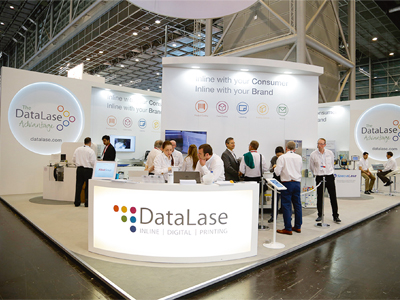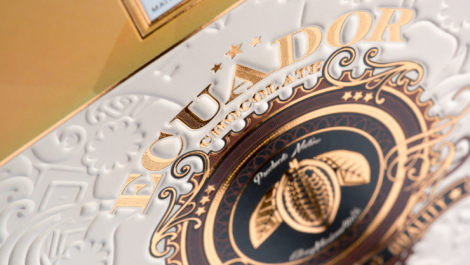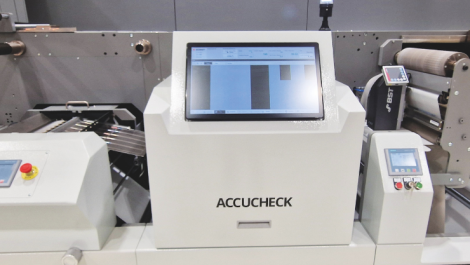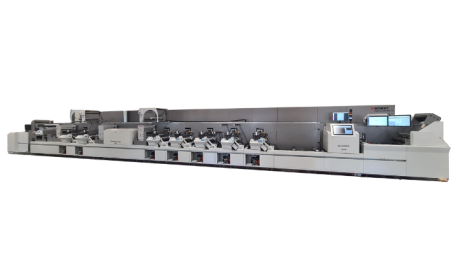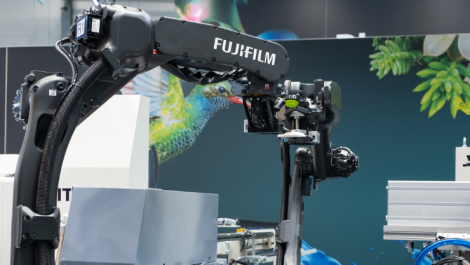Datalase offers an inkless technology for late stage marking
Most packaging is coded and printed with batch information and best-before dates, usually carried out at the filling or packing stage. Sean Smyth looks at some of the marking and coding technologies on the market.
There are several competing technologies in use for adding coding to packaging, including continuous or drop on demand inkjet, laser marking systems, thermal transfer overprinting and print and apply labelling.
It is not just for food and beverage packaging. Pharmaceutical, tobacco, personal care, cosmetics and many household materials will be batch and date coded, while many electronic items, cables, wires and tubes will carry identification marks. Coding is also widely used in postal and logistics applications, and there is a myriad of security applications.
There are many suppliers in this market, looking at how to integrate printing systems into a wide variety of packaging and filling operations, without impacting the productivity of the systems, and providing a range of coding that can be read by humans or increasingly machines to smooth supply chains and logistics. The bulk of the market is now non-contact technology, with small footprint and flexibility major benefits to the user.
Making the link
Linx has been selling continuous inkjet, laser coding and thermal transfer printers since 1987. It aims to lower the total cost of ownership for customers through a range of functions. The latest continuous inkjet model range is the Linx 8900 CIJ introduced in 2015. It has a large high resolution touch control screen, which is customisable for quick access to regularly used functions. It has on-screen message editing prompts for accurate inputting, and a simple Self-Service Wizard to guide operators through an engineer-free service module change that minimises downtime. It provides real-time data on the overall production line performance, helping operators identify patterns or reasons for stoppages, allowing them to quickly implement changes to improve effectiveness.
The latest models offer faster line speeds and easier set up, while lengthening the necessary service interval from 13,000 hours (or 18 months) to 18,000 hours (or 24 months). The Linx 8920 and Linx 8940 can print up to five lines of code, with a top speed of 6.25 m/sec. They also feature Advanced System Monitoring to provide a continual check of operation in terms of ink system and environmental conditions. This enables it to identify simple actions that users can take to prevent unscheduled stoppages, aiding uptime while avoiding unplanned downtime. This is helped by giving a specific name to the coding requirements for each different production line that can be selected to save time and reduce the likelihood of set-up errors.
On video
Videojet industrial printers are widely used in the consumer, pharmaceutical and industrial packaging sectors. The company claims the most recently launched solutions help customers improve productivity, protect and grow brands, while staying ahead of industry trends and regulations. One interesting niche is in direct egg printing, a sector requiring identification that has come a long way from the old lion stamp. Focus on food safety is paramount for egg producers. The need to easily communicate important expiration and traceability data helps ensure compliance with safety regulations. Evolving regulations, changes in consumer preferences, food safety concerns and retailer demands are all factors, Videojet has over 30 years of experience in egg marking applications with both food grade printers and PDA-approved inks. Brands can print messages and graphics directly on eggs, while improving coding quality to increase the convenience and appeal of egg products.
Dover is a $7.5 billion turnover diversified global manufacturer that has made several strategic investments into the inkjet space, including buying CSat from Heidelberg. It owns Markem-Imaje, which has supplied product identification and traceability solutions to more than 40,000 customer sites, using inkjet, thermal transfer, laser, print and label application systems. It delivers fully integrated solutions that enable product quality and safety, regulatory and retailer compliance, better product recalls and improved manufacturing processes.
Leading the game
Domino Printing Sciences claims to be the market leader in coding and marking, with many years’ experience in developing laser marking, thermal transfer and inkjet printing solutions with continuous and drop on demand systems. Domino printers are designed to print high quality alphanumeric and graphic codes including barcodes, 2D data matrix and QR codes. It pioneered the use of sealed CO2 laser coding systems and has developed the F220i fibre laser system, which incorporates the latest fibre technology to mark permanently a wide range of materials including metal, plastics and flexible packaging with high precision. Laser coding is extremely reliable, needing very low maintenance that boost the overall equipment effectiveness. As no inks or fluids are used, laser systems are environmentally friendly and very cost-effective.
Domino is one of the few companies to have developed its inkjet into full colour label and package printing, but the bulk of its revenue still comes from coding and marking. Digital presses have grabbed a significant chunk of the label market in the UK (and beyond) over the past few years, replacing much flexo printing and providing new benefits to printers. While this has largely not affected the coding sector there are signs this is changing.
Hidden codes
At drupa, Screen showed several novel security features on the Truepress Jet L350UV label press, which is certified to use Seal Vector from Advanced Track & Trace. The stability of the transport allows good registration accuracy, while the small droplet size means microtext and invisible type can be printed that cannot be seen with the naked eye. A pen reader or smartphone with adaptor is used to read the unique codes for comparison with registered information. The system is effective for identifying various types of counterfeit goods.

Screen prints Advance Track & Trace security labels on its inkjet press
The Truepress can print legible text down to 4 point. It has a choke function to prevent thickening of outline text, providing high legibility even for the large amounts of information usually found on drug and supplement labels. These features enable one pass processing of individual lot numbers and other variable printing jobs. It can also provide other security features. The above picture shows a label with fine text and guilloche, with a pale blue background. When a lenticular lens is overlaid at 45 degrees, the Screen logo becomes visible. This is accomplished by varying the angle of lines making up the flat tint, enabled through the control in drop placement.
Emerging technology
Direct laser imaging, rather than marking or scribing, is an emerging technology for coding and marking. This involves pre-printing or coating a laser sensitive clear material onto a pack or label, and then imaging it at a later stage. The first options are a clear to black transformation, for coding and marking at a filling line where the non-contact laser could be a cleaner alternative to inkjet.
Datalase is developing a solution, claiming its late-stage laser marking solution is gaining traction with demonstrations on the Ricoh and Xerox stands at drupa, along with several inkmakers. The technology allows contactless late stage single colour imaging at filling or point of sale, with development to allow full colour in time.
There are several ways this might develop. Legislation and supply chain demands are increasing, with greater need for anti-counterfeit and brand protection. In pharmaceuticals late-stage customisation is commonplace for language and legislative compliance in many countries. In several regions every pack has to contain specific source information to aid traceability throughout the supply chain. The coding guys are looking to move up the value chain. This is why Domino developed the N610 narrow web press, and the flat sheet K600i system. The high performance digital presses want to provide more variable data capability to make them more appealing and change printing locations to become closer to the consumer. There is a lot more of potential for equipment suppliers and converters in keeping an eye on the humble ‘best before’ date code.

